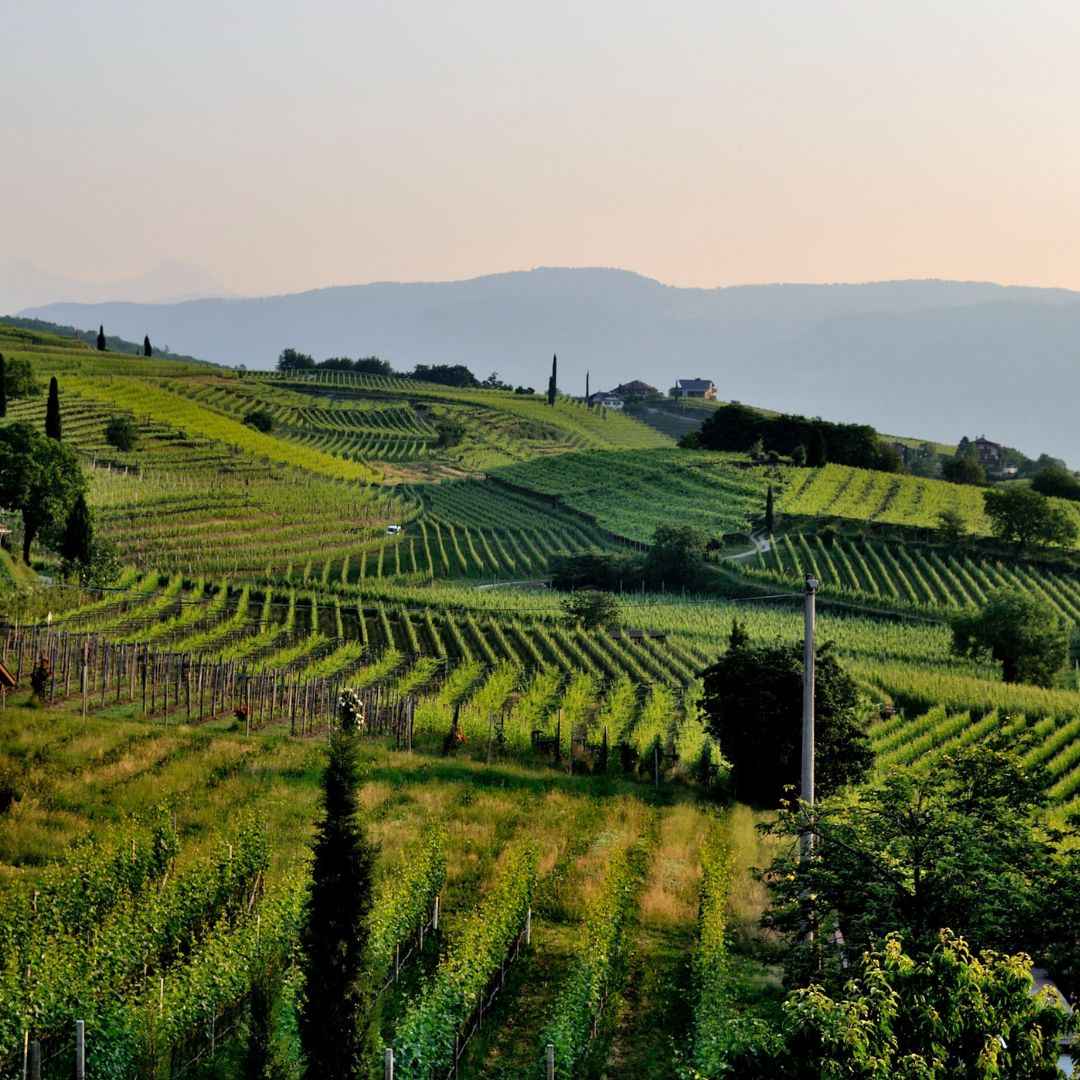
Beaujolais
What price per square meter?
Apartment
NC
House
NC
Apartment
Price per m²
€2,350
House
Price per m²
€3,000
Estimate your property according to its features
Known for its wine estates and its exceptional golden stone properties, the Beaujolais is a vast region located in the north of the Rhône department and includes about 127 towns and villages. BARNES Lyon takes you to discover this beautiful region and its specificities. Find also other towns close to Lyon as well as the districts of Lyon.
Living in the Beaujolais: a vast region
Made up of many villages, the Beaujolais is a region full of surprises and discoveries.
You will find beautiful houses, often old, as well as high-end properties and castles surrounded by vineyards, in the heart of the countryside. A peaceful setting, close to the city of Lyon, where prices are much lower and surfaces more important.
Northern Beaujolais, the wine region
The northern Beaujolais is the most wine-producing part of the region with villages such as Chiroubles, Villié Morgon, Régnié Durette or Fleurie. The former capital of Beaujolais, Beaujeu, is located in this area. The main town is Belleville-sur-Saône which has a train station, two elementary school, a college, a high school and many shops.
In this part of the Beaujolais region, you will find the village of Saint-Amour, known for its romantic stays thanks to its "Auberge du Paradis" or its restaurant "Au 14 février" but also to its famous wine "cru Saint-Amour".
Schooling in Belleville-sur-Saône
Dailloux Nursery School
Jean Macé Nursery and Primary School
Édouard Herriot Primary School
Emile Zola College
Aiguerande High School
Notre Dame Private School
In the center, the agglomeration of Villefranche-sur-Saône
The "capital" of the Beaujolais region, Villefranche-sur-Saône is located between the Saône River and the Beaujolais Mountains. It is the largest city in the Beaujolais region. Very well connected to Lyon thanks to the freeway and the TER, the city is self-sufficient and has many local shops, especially in the Rue Nationale, but also a very large shopping area.
Around the city are charming villages such as Arnas, Gleizé, Blacé, Denicé or Jarnioux.
Schooling in Villefranche-sur-Saône
Nursery schools : Manon Roland, Paul Fort, Paul Eluard, Françoise Dolto, Condorcet, Camille Claudel, Jean Bonthoux
Kindergarten and elementary schools: Jacques Prévert, Pierre Montet, Armand Chouffet, Albert Camus, Lamartine
Elementary schools: Jean Zay, Jean Monnet, Jean Macé, A.Dumontet, F. Buisson, J. Bonthoux, Cours Perrier (private), Saint PIerre des Remparts (private)
Colleges: Jean Moulin, Faubert
High school Louis Armand, Claude Bernard
Notre Dame de Mongré private school, college and high school
In the south, the prized Pierres Dorées
The southern region of Beaujolais is also called the "Pierres Dorées" region because 39 of its villages are built with a yellow ochre rock that reflects the sunlight giving it beautiful bright colors. Many will tell you that it has an air of Tuscany about it.
The village of Oingt, a medieval village, is classified as one of the "Most Beautiful Villages of France" and is the only one in the Rhône department! Its medieval streets, its fortified gate, its tower and the church of Saint-Mathieu will transport you out of time.
Many walks also await you in villages such as Theizé, Marcy-sur-Anse, Charnay, Saint-Jean-des-Vignes. As for activities, you will not be outdone, the Colombier water plan is a natural space developed in an old gravel pit of 120 hectares, it has a beach, walking paths and games for children. In Lucenay, you will find the Golf du Beaujolais, with a course in the heart of the vineyards.
The west, "The green Beaujolais
The western Beaujolais, also called the "Ouest Rhodanien" and "Beaujolais Vert" is located between the cities of Lyon and Roanne, a region in which the communes of Tarare, Amplepuis, Lamure, Chamelet or Cublize are located. Renowned for the beauty of its nature, it totals 53 communes on approximately 768 km². You will find the Lac des Sapins, the largest ecological bathing site in Europe with its 8,000 m². Swimming in an idyllic setting, walking or cycling will enliven your weekends.
Since 2015, the Green Beaujolais has tended to become an "eco-territory" thanks to the implementation of a Climate Plan. The conservation of the landscape heritage and its history is also one of the objectives of the region. Thanks to these different projects, the region has been gaining in attractiveness and dynamism for a few years now. A website called Beaujolais Vert Votre Avenir has even been created in order to facilitate the installation of newcomers in the region.
Beaujolais: great stories to tell
Beaujolais: the history of its belonging
The name Beaujolais comes from the house of Beaujeu located in the eponymous village that was its historical capital, in the west of the region.
Around 950, the land was owned by the first lord of Beaujeu and during the following centuries, the Sires of Beaujeu made their territory a region in its own right. In the 14th century, Antoine de Beaujeu donated part of his lands to the Bourbon house. In 1522, the Beaujolais was taken away from them and given to Louise de Savoie, mother of François I, which at her death became the royal family domain.
With the passing of time, marriages and dowries, Beaujolais came back to the House of Orleans with the last Count of Beaujolais being Louis Charles d'Orléans, brother of King Louis-Philippe I (1779 - 1808).
Beaujolais: the story of the beast of the Lyonnais
The summer of 1754 marks the beginning of a terrible story. It all began in the famous Beaujolais region where a child was found devoured, followed by two others in the vicinity of Villette-de-Vienne and Régnié-Durette. More than 2,000 hunters set out in pursuit of this beast, which claimed 34 victims aged from 1 to 14 years. Hyena, wolf or even werewolf, the hypotheses are numerous, the mystery remains. In 1764, a similar story occurred in Lozère, with more than a hundred victims and known as the Beast of Gévaudan.
Beaujolais: the history of its wines
The vineyard has always been a very present activity in the region. In the 12th century, a port was built to facilitate trade in general, but also particularly that of wine. But it was in the 17th century that the vineyard expanded with the development of the Lyon market at first and then nationally with the construction of the railroad.
It was not until the 19th century that the Beaujolais region was structured as we know it today, through 3 economic sectors: vineyards, agriculture, and industry.
The Beaujolais is today one of the reference regions in French viticulture, known for its red wines. The vineyard covers about 22 000 hectares. In total, 12 AOC come from the region: Beaujolais, Beaujolais-Villages and 10 crus: Fleurie, Chénas, Juliénas, Côte de Brouilly, Brouilly, Chiroubles, Saint-Amour, Moulin à Vent, Morgon and Régnié. Since the 1950s, the reputation of the famous Beaujolais Nouveau has been growing. The flagship product of the region, it is traditionally expected every third Thursday of November. In the Beaujolais, conviviality is the order of the day with, for example, the annual festival of the vintages which brings together nearly 20,000 visitors or more passionately throughout the year with the Order of the Companions of Beaujolais!
Where to go out when you live in Beaujolais?
The theater of Villefranche
The new cinema complex : CGR Villefranche
The theater of Grenette


